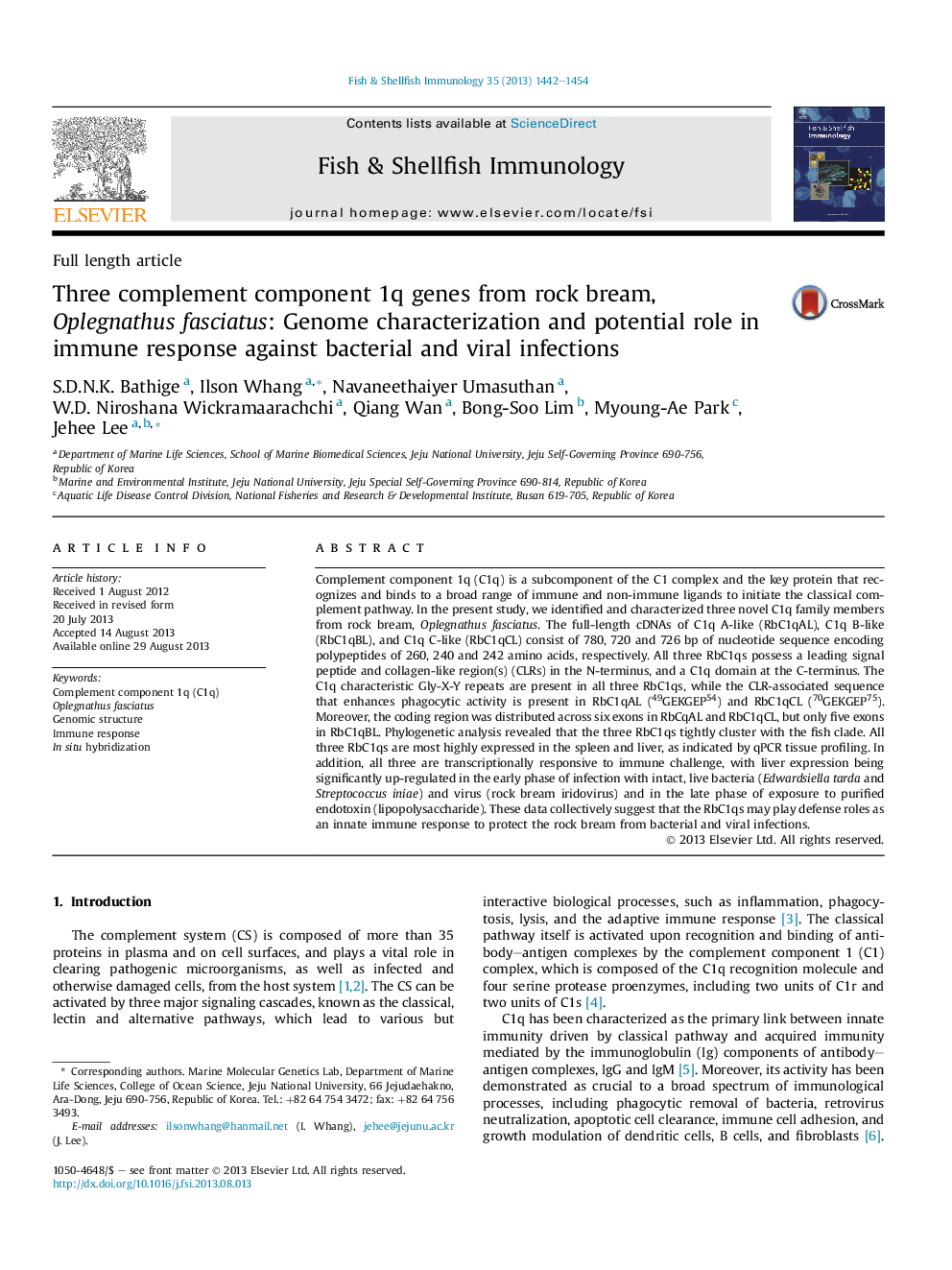| Article ID | Journal | Published Year | Pages | File Type |
|---|---|---|---|---|
| 2431715 | Fish & Shellfish Immunology | 2013 | 13 Pages |
•Identification of full length cDNA and genomic sequences of three C1q subcomponents (RbC1qAL, RbC1qBL and RbC1qCL).•Molecular characterization and molecular modeling of RbC1qs.•Quantification of RbC1qs mRNA from healthy rock bream tissues.•Expressional profile of RbC1qs after LPS and live pathogen infections.•Detection of RbC1qs' transcripts in spleen tissues by in situ hybridization.
Complement component 1q (C1q) is a subcomponent of the C1 complex and the key protein that recognizes and binds to a broad range of immune and non-immune ligands to initiate the classical complement pathway. In the present study, we identified and characterized three novel C1q family members from rock bream, Oplegnathus fasciatus. The full-length cDNAs of C1q A-like (RbC1qAL), C1q B-like (RbC1qBL), and C1q C-like (RbC1qCL) consist of 780, 720 and 726 bp of nucleotide sequence encoding polypeptides of 260, 240 and 242 amino acids, respectively. All three RbC1qs possess a leading signal peptide and collagen-like region(s) (CLRs) in the N-terminus, and a C1q domain at the C-terminus. The C1q characteristic Gly-X-Y repeats are present in all three RbC1qs, while the CLR-associated sequence that enhances phagocytic activity is present in RbC1qAL (49GEKGEP54) and RbC1qCL (70GEKGEP75). Moreover, the coding region was distributed across six exons in RbCqAL and RbC1qCL, but only five exons in RbC1qBL. Phylogenetic analysis revealed that the three RbC1qs tightly cluster with the fish clade. All three RbC1qs are most highly expressed in the spleen and liver, as indicated by qPCR tissue profiling. In addition, all three are transcriptionally responsive to immune challenge, with liver expression being significantly up-regulated in the early phase of infection with intact, live bacteria (Edwardsiella tarda and Streptococcus iniae) and virus (rock bream iridovirus) and in the late phase of exposure to purified endotoxin (lipopolysaccharide). These data collectively suggest that the RbC1qs may play defense roles as an innate immune response to protect the rock bream from bacterial and viral infections.
